


Launched just after the end of the Second World War it was not until the Cold-War years that she, and her sister ships, BLAKE & LION were revived and redesigned to become the modern Light Cruisers. TIGER finally commissioned into RN service in 1959. TIGER & BLAKE were later converted in "helicopter and command cruisers" and TIGER was in dockyard hands from 1968 to 1972, emerging with a flight deck capable of operating four Wessex or Sea King helicopters.
The many illustrations and photographs help to bring the story to life, showing the places, people and events that the ship visited and participated in. It is a lasting record of the ship’s history and achievements over her nineteen years in RN service.
This excellent volume is produced as a large landscape (29.7 x 21.0 cm) format hard cover book in full colour, illustrated throughout with diagrams and photographs on glossy 200gsm paper. Copies are printed on demand and delivery is usually around 14 working days from date of ordering.
Publisher: Toad Publishing. UK. 2016
Paperback
Buy direct form the printer
peecho.com
or the
author's web site
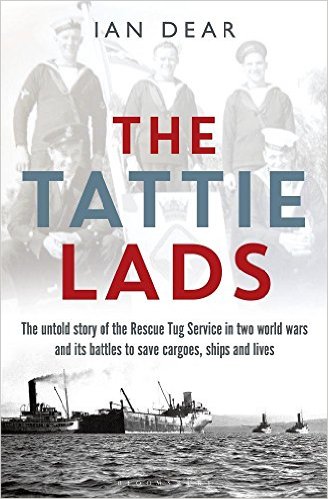
Presented with an open goal, the prolific military and yachting historian Ian Dear (49-52) knows how to score. The Tattie Lads is a page-turning account of the activities of the Royal Navy’s Rescue Tug Service (RTS) in the two world wars of the 20th century. It is an engrossing read, full of incident and colour yet, for some bizarre reason, it has never been told before. Both the official histories of the RN and the Merchant Navy ignore the Service. Dear met several veterans of the RTS at an event in Brixham in 2013 and subsequently was invited to write a history of the Service and handed a huge amount of material on which this book is based.
The RTS’s origins go back to 1915 and it played a growing role in the First World War as the German submarine threat grew. But in 1919 the service was disbanded. When war broke out again 20 years later only five commercial tugs in British ownership were powerful enough to be used as rescue tugs on active service. The RTS was soon reformed and by 1944 consisted of 85 tugs, 604 RNR officers and 1,602 ratings, mostly from the Merchant Navy. Estimates vary, but Dear reckons that between 1939-45 the RTS saved nearly three million tons of merchant shipping, 254 British and Allied warships and thousands of lives for the loss of 20 tugs.
Such a stellar achievement should have won widespread recognition both at the time and subsequently but for one factor – each rescued vessel in all probability represented an Allied setback of one kind or another. A torpedo sinking, a collision in a convoy, poor seamanship or errant navigation. So the largely volunteer Tattie Lads (so-called because they were recruited under the T.124T Agreement) never got the credit they deserved, until now.
The book is chock-full of extraordinary feats of bravery and seamanship and ingenuity. No naval action or landing operation, particularly in the Mediterranean, was attempted without an RTS presence. No convoy sailed the Atlantic without a rescue tug escort. D-Day and the invasion of continental Europe by the Allies in 1944 would not have been possible without the contribution of 30 rescue tugs which towed three million tons of steel and concrete across the Channel to allow the construction of two prefabricated harbours known as Mulberries off the beaches of Normandy.
Publisher: Conway 2016
Available in hardback & E-book versions
ISBN-13: 978-1844864010 (hardback)
ASIN: B01FA851HS (Kindle)
Buy it from Amazon
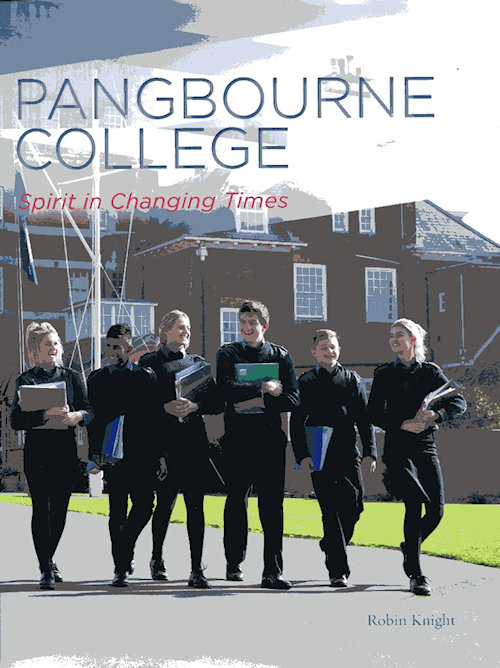
Commissioned to celebrate the College's Centenary in 2017 this book details the history of Pangbourne College, its achievements and evolution over the last century. Founded as “The Nautical College” during the First World War in 1917 by Sir Thomas Lane Devitt Bt., its aim was to train boys for a career as Merchant Navy officers. The Admiralty took a keen interest in the new establishment and students were issued naval uniform together with the status of cadet in the Royal Naval Reserve. As the book recounts the many achievements of the school it records that in addition to Merchant Marine officers Pangbourne produced many officers for the RN – about 550 by one count. It became "Pangbourne College" in 1969 and become a co-educational boarding school in 1996; it retains a distinctly nautical flavour; the pupils still wear naval uniform.
The History is wonderfully illustrated throughout; by sharply drawn pen portraits of some formidable Pangbourne characters, and a wealth of photographs and other illustrations. Sprinkled throughout the narrative many of the College’s traditions, like the origins of the Chief’s Chair (made with wood from HMS Victory) presented to the college in 1930, and running the 100 present (the college’s own twist on the cross-country race) are covered in feature boxes; together with short biographies of notable staff and former cadets these are eye catching and easy to find for those who wish to browse through the pages.
Paul asked for sailors, past and present, to forward their 'dare do' and 'dare done' stories. Along with this, he recalled many a tale he himself heard in the mess. More narratives, anecdotes and dits were harvested from the internet and social media. It is these, the 'True tales from the Messdeck' which are the stories, once again re-told here, which are fondly known as Jack's Dits.
Publisher: Third Millennium Publishing 2016
ISBN 978-1-908900-07-5
Buy it form Pangbourne College shop
email shop@pangbourne.com
As part of Pangbourne College's Centenary celebrations an ambitious project was undertaken to record the details of as many deceased Old Pangbournians as possible in one document; it is estimated that 1,500–2,000 Old Pangbournians have died in the one hundred years since 1917, but no comprehensive record of their careers and lives has existed in one place until now. In this work Robin Knight has collected and compiled somewhere in the region of 1,250 obituaries, of varying lengths and detail, taken from a large variety of sources to tell their stories Of these 177 Old Pangbournians were killed on active service in World War II.
The result is a book of some 150,000 words containing about 1,250 long and short OP obituaries and death notices – basically, all the ones unearthed up to April, 2016. Fifteen copies have been printed and will be held at the College against need. In addition, a pdf of the book is available on the OP website.
Some Old Pangbournians have led extraordinary lives, others made few waves. Among the more unusual activities, OPs have rescued Lord Louis Mountbatten, fired a test missile at Cape Canaveral, surveyed an unknown bay in Antarctica, become the finest ship model maker in the U.K., piloted a spy flight over the USSR, been a television film cameraman in the Vietnam war, arrested rebellious insurgents in colonial territories, flown The Queen, run a turkey farm, become leading watchmakers and olive oil producers, designed nuclear power stations, invented a ship’s ladder, earned a living as a blacksmith, started a hot air balloon society, grown avocado fruit in Spain and helped to reform the Berlin Philharmonic Orchestra after World War II.
Publisher: The Old Pangbournian Society 2016
ISBN 978-0-9568770-2-4
Download to read free in PDF format
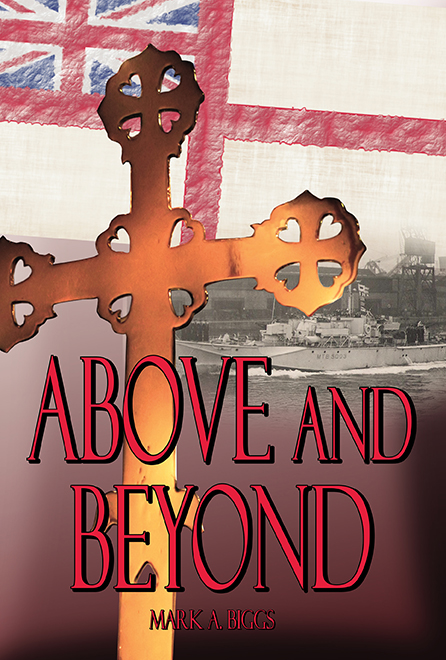
Above and Beyond, is a story of one man's a journey to God; Laurence Walter Biggs' story tells of his journeys in World War Two as a Seaman Gunner on the Russian convoys to Murmansk, to officer training school as a CW candidate and an unexpected turn of events when he has to leave the course. Laurence finds himself promoted t0 Leading Seaman and doing three jobs on his return to 'normal' duty; by day a Gunnery instructor at HMS GOSLING teaching new entrants, by night teaching weapons and commando skills to civilians going behind emery lines, and when called for, he operated as the Coxswain of a vessel in the top secret world of covert operations with one of the RNs Special Operation Groups.
After completing 10 missions with the Special Operations Group it really was back to 'normal' duties, this time with Coastal Forces employed on minesweepers and patrol work. In December 1944, after several near brushes with death, Laurence finds himself floating in the freezing waters of the North Sea after MTB 243 has struck a mine and been abandoned, he makes a promise to serve God. The book takes its title from the citation for the award of Mentioned in Despatches ‘Above and Beyond the Call of Duty’ which Laurence received for his actions that night aboard MTB 243, a night which would mark the start of his journey to God and a promise to keep. Laurence Biggs lived to fulfil his promise and became an ordained a Priest in the Anglican Church in England on Sunday 21st May 1967 and later emigrated to Australia in 1970. He died in 2005 in Drouin, Victoria, his last Parish.
A very interesting and informative book, it sheds light on the activities of some of the men whose shadowy wartime exploits still remain secret today
Publisher: MBK Consulting
Available in paperback & E-book versions
ISBN-9780992429300 (paperback)
ASIN:-B00I8Z4H9E (Kindle)
Buy it form Amazon

Exactly 70 years on, David J. B. Smith's compelling and revealing book tells the story of one of His Majesty's Submarines, HMS/M Unbeaten, the loss of which was to remain a mystery for many years. This in-depth work encompasses her build at the Vickers Armstrong, Barrow-in-Furness shipyard, her adoption by the Borough of Hove and all of her two years of war patrols. Ultimately it reveals the details of her final clandestine tasking in November 1942 and subsequent loss. HMS/M Unbeaten was last heard from via a signal sent to Flag Officer Submarines on 1 November 1942. The signal simply stated: ‘Operation Bluestone completed’; she was on passage to the Mediterranean via Gibraltar after undergoing a refit in Britain. On 11 November 1942 she was attacked and sunk in error by an RAF Wellington of No. 172 Squadron, Coastal Command while in the Bay of Biscay. She was lost with all hands.
Having learned that a distant family member went down with the submarine David began investigating the circumstances of the loss. Drawing extensively on records held at the National Archives and by naval museums, combined with letters and photographs from former crew members and the families of those who were lost, he has compiled a compelling insight into the life of both the boat and her crew. The families of those who perished received vague explanations for the loss of Unbeaten at the war's end, it was to be 30 years before the truth was revealed with the unsealing of the official papers; now the full story has finally been told.
David J.B. Smith Joined the Senior Service himself as a RADAR Operator at the age of 17, he went on to enjoy a full and varied 23-year Royal Navy career. David retired from Service life as a Chief Petty Officer (Seaman). He now lives in a quiet quayside village in sunny Devon, England.
Publisher: Stand-Easy Publishing
Available in paperback, E-book & Audio Book versions
ISBN-10: 0957392508
ASIN: B00AKK1GUI
Buy it from Amazon
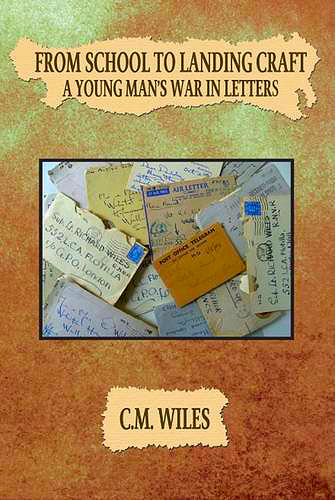
‘From School to Landing Craft' follows the naval career of Lt. Richard Charles Wiles RNVR DSC from his entry into the Royal Navy as a Seaman at HMS Royal Arthur in October 1941 to his selection for training as an RNVR officer at HMS King Alfred in August 1942. On receiving his commission, he served in Combined Operations Landing Craft, initially with the 126 LC(A) flotilla, participating in the landings at Sicily and later 552 LC(A) Flotilla and landed troops on Utah Beach during the Normandy landings. This flotilla later saw action in NW Europe on the River Waal at Nijmegen in the Netherlands, working with the Royal Engineers.
The book tells his story in two ways, first a factual account of his time in the Royal Navy drawn from his service records, and secondly, an account based on extracts from letters between him, his family and friends. While the content of the letters offers insights into the daily lives or those involved, their hopes, fears and expectations, the work of the censor is also very apparent, especially in letters home; the official record helps fill in these ‘censored’ gaps in the narrative.
The book has 170 pages and many photographs, maps and diagrams, some in colour, and helpful appendices explaining about landing craft operations and procedures. The extensive use of letters makes this book a pleasant change from standard biographical works.
Publisher: Upfront Publishing
Paperback
ISBN-10: 178035021X
ISBN-13: 978-1780350219
Buy it from Amazon
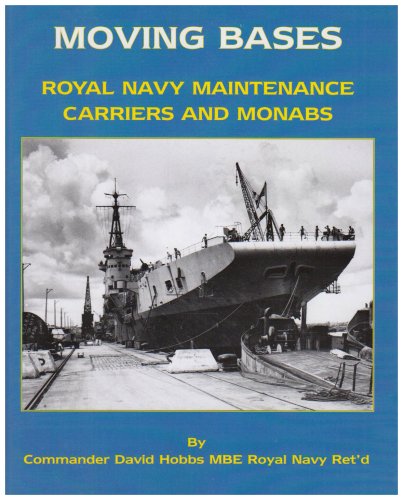
This is another in David Hobbs list of detailed history books covering aspects of the Royal Navy, this time he focuses on Maintenance Carriers and Mobile Air Bases which were planned and constructed both during the Second World War and since.
Many previous works on the subject of the Fleet Air Arm tend to focus on the fighting ships and overlooked the important role played by RN aviation support elements. This book covers the development and implementation of the specialist maintenance carrier and the land-based equivalents that were the MONABs; much of the material and many of the black & white photos appear in print for the first time.
Also covered are is the role of the smaller Escort Carriers which were pressed into service as stop-gap repair ships during the war in the Pacific, working with the MONABs to maintain a supply of serviceable aircraft to the British Pacific Fleet.
Note: Some of the material on MONABS and escort carriers is drawn from websites that form part of the RN Research Archive, and are credited under a previous domain www.faahistoryweb
Publisher: Maritime Books
Hardback
ISBN-10: 1904459307
Buy it from Amazon
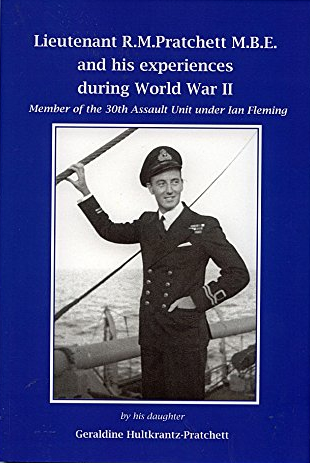
Geraldine Hultkrantz has produced a small volume about her father, Lieutenant Richard Maurice Pratchett RNVR MBE, and his experiences during World War 2. It tells of her father’s pre-war career in the chemical industry and his determination to gain academic qualifications in his own time, to his enlisting as an ordinary Seaman in 1940. In 1942 while serving on the destroyer HMS Sikh he was selected for officer training under the Commissions and Warrants (CW) scheme and emerged from HMS King Alfred with a commission as a Temporary Sub-Lieutenant RNVR in August 1942.
He chose to work in the dangerous world of mine disposal and worked as a bomb disposal officer with the Land Incident Section of the Torpedoes and Mining Department of the Admiralty, travelling around the UK defusing unexploded mines. In the run=up to D-Day he was employed in preparations for the deployment of the Mulberry harbours before being recruited by the Naval Intelligence Division for duties with the new 30 (Commando) Assault Unit. During his time with 30AU he travelled to liberated territories to recover captured enemy technology for return to the UK, initially in Europe and later in the Far East. The book is easy to read and is well researched providing background information on the units, ships, and operations with which Lt. Pratchett was involved.
Publisher: ELSP, St Helier
Kindle only
ASIN: B01HON1P3G
Buy it from Amazon
© 1999-2025 The Royal Navy Research Archive All Rights Reserved Terms of use Powered byW3.CSS